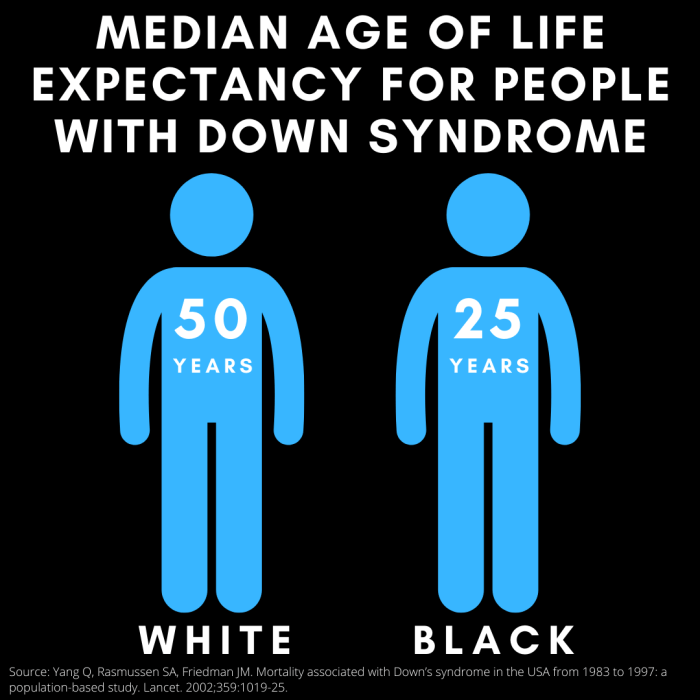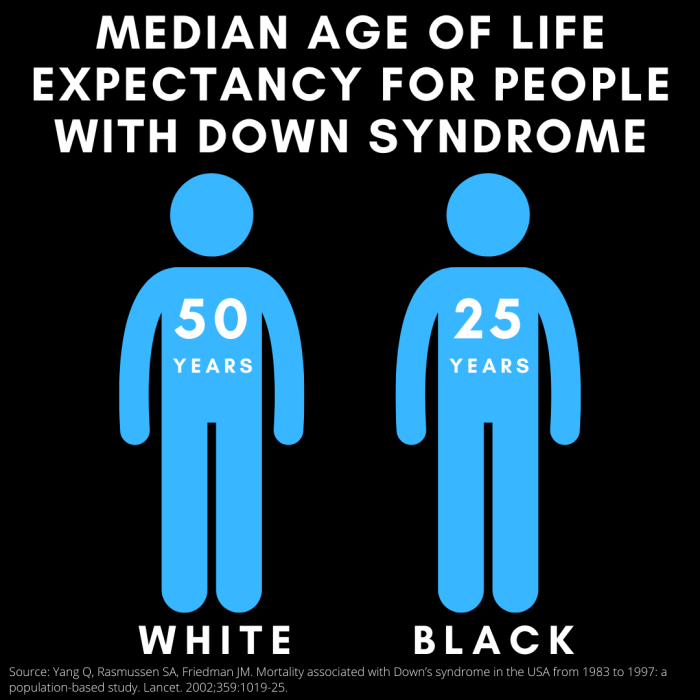Can arthritis shorten your lifespan? This question delves into the complex relationship between arthritis and overall health. Different types of arthritis, like osteoarthritis and rheumatoid arthritis, impact daily life in various ways, from mobility to overall well-being. Understanding the potential effects on physical function, mental health, and nutrition is crucial in comprehending how arthritis might influence lifespan.
This exploration will examine current research on the link between arthritis and lifespan, considering factors such as age of diagnosis, treatment adherence, and overall health management. We’ll also discuss effective strategies for managing arthritis, and highlight the importance of early diagnosis and treatment in improving quality of life.
Defining Arthritis Types
Arthritis, a broad term encompassing various joint conditions, can significantly impact daily life. Understanding the different types of arthritis is crucial for effective management and treatment. This section delves into the characteristics of common arthritis types, highlighting their causes, symptoms, and typical progression.
Different Types of Arthritis
Arthritis isn’t a single disease; it’s a group of over 100 conditions affecting the joints. These conditions can vary significantly in their underlying causes, symptoms, and progression. Knowing these distinctions helps in proper diagnosis and tailored treatment plans.
| Arthritis Type | Primary Cause | Common Symptoms | Typical Progression |
|---|---|---|---|
| Osteoarthritis | Progressive wear and tear of cartilage within the joints, often associated with age, joint overuse, and genetics. | Pain, stiffness, especially in the morning or after inactivity; creaking or grating sounds in the joints; swelling and tenderness around the affected joint; reduced range of motion. | Typically progresses slowly, with periods of flare-ups and remission. Early stages may be managed conservatively, but later stages may require more invasive treatments like joint replacement surgery. Examples include hip and knee osteoarthritis, which are often prevalent in older individuals. |
| Rheumatoid Arthritis | An autoimmune disease where the body’s immune system mistakenly attacks the lining of the joints, leading to inflammation and damage. Genetics and environmental factors play a role. | Chronic, widespread pain and stiffness, especially in the morning; swelling, warmth, and redness in the affected joints; fatigue, fever, and loss of appetite; potential for joint deformity over time. | Characterized by periods of active inflammation (flare-ups) and periods of remission. If left untreated, it can lead to significant joint damage and disability. Early diagnosis and aggressive treatment are crucial to slow disease progression and maintain joint function. |
| Gout | A metabolic disorder caused by high levels of uric acid in the blood, which crystallizes and deposits in the joints. This can be triggered by genetics, diet, or certain medications. | Sudden, severe pain, redness, swelling, and tenderness in a single joint, often the big toe; inflammation can be excruciating, sometimes accompanied by fever. | Episodes of acute gouty arthritis can occur intermittently, with periods of remission between attacks. Without proper management, gout can lead to chronic joint damage and tophi (uric acid deposits) formation. Diet modifications and medication are crucial to prevent further attacks and reduce the risk of long-term complications. |
Comparing Arthritis Types
The table above highlights key differences in the causes, symptoms, and typical progression of osteoarthritis, rheumatoid arthritis, and gout. Osteoarthritis is often associated with age-related wear and tear, while rheumatoid arthritis is an autoimmune response. Gout is a metabolic disorder related to uric acid levels. Recognizing these distinctions is essential for appropriate diagnosis and management strategies.
Arthritis Impact on Daily Life
Arthritis, a broad term encompassing various inflammatory conditions affecting joints, significantly impacts daily life. The specific impact depends on the type of arthritis, its severity, and the individual’s overall health. Understanding these effects is crucial for developing effective coping strategies and support systems.Different types of arthritis manifest in distinct ways, impacting daily activities in varying degrees. Some forms, like osteoarthritis, might initially cause only minor discomfort, while others, such as rheumatoid arthritis, can lead to more substantial limitations.
Recognizing these differences is essential for tailored management approaches.
Effects on Mobility
Daily movement, including walking, climbing stairs, and even getting out of bed, can become challenging with arthritis. Pain and stiffness in joints can limit range of motion and make simple tasks laborious. For instance, someone with knee osteoarthritis might find it difficult to walk long distances or climb stairs without significant pain. The impact on mobility can range from mild discomfort to complete inability to perform certain activities.
Impact on Household Tasks
Many household chores, like cooking, cleaning, and laundry, become physically demanding with arthritis. Activities involving lifting, bending, and repetitive motions can be painful and exhausting. A person with rheumatoid arthritis, for example, might struggle to carry groceries or perform tasks like vacuuming or scrubbing floors. The level of difficulty is highly dependent on the specific type and severity of the arthritis.
While arthritis can impact quality of life, it’s a complex question whether it significantly shortens lifespan. Factors like the type of arthritis, its severity, and overall health play a crucial role. Interestingly, conditions like macular degenerations vs glaucoma can also impact lifespan, but in different ways. For a detailed comparison of these eye conditions, check out this helpful resource on macular degenerations vs glaucoma.
Ultimately, a doctor can provide a more personalized assessment of how arthritis might affect an individual’s long-term health.
Impact on Work and Social Life
Arthritis can severely impact work productivity and social participation. Pain and fatigue can make it difficult to concentrate or maintain energy levels throughout the workday. Participating in social activities, like attending meetings or outings, might also be affected. An individual with ankylosing spondylitis might find it difficult to participate in certain sports or hobbies.
Impact on Different Arthritis Types
The impact of arthritis on daily life varies considerably between different types. While some forms, like osteoarthritis, primarily affect weight-bearing joints, others, such as psoriatic arthritis, can impact various parts of the body, including the spine and fingers.
| Daily Activity | Osteoarthritis | Rheumatoid Arthritis | Psoriatic Arthritis | Ankylosing Spondylitis |
|---|---|---|---|---|
| Walking | Mild to Moderate | Moderate to Severe | Mild to Moderate | Moderate to Severe |
| Lifting | Mild to Moderate | Moderate to Severe | Mild to Moderate | Moderate to Severe |
| Household Chores | Mild to Moderate | Moderate to Severe | Mild to Moderate | Moderate to Severe |
| Work | Mild to Moderate | Moderate to Severe | Mild to Moderate | Moderate to Severe |
| Social Activities | Mild to Moderate | Moderate to Severe | Mild to Moderate | Moderate to Severe |
Note: The impact listed in the table is a general guideline. Individual experiences can vary significantly based on the severity of the condition, the person’s overall health, and the type of treatment they are receiving.
Arthritis and Physical Function
Arthritis, a broad term encompassing various conditions, significantly impacts a person’s daily life, often leading to reduced physical function. The severity of this impact varies greatly depending on the specific type of arthritis, its stage, and individual factors like age, overall health, and lifestyle. Understanding the relationship between arthritis and physical function is crucial for developing effective management strategies and improving quality of life.The complex interplay between inflammation, joint damage, and pain directly influences mobility and strength, resulting in a progressive decline in physical function.
This decline isn’t uniform across all individuals; factors like early diagnosis, adherence to treatment plans, and proactive lifestyle choices can greatly affect the rate and extent of the decline.
Impact on Mobility
Reduced mobility is a common symptom of arthritis. Pain and stiffness in joints limit range of motion, making simple tasks like walking, climbing stairs, or getting dressed more challenging. This can lead to decreased independence and social participation. Individuals may avoid activities they once enjoyed due to discomfort, further exacerbating the issue. Over time, the limited use of joints can lead to muscle weakness and atrophy, compounding the problem.
Early interventions focusing on maintaining joint mobility through exercise and physical therapy are crucial.
Impact on Strength
Arthritis can also diminish muscular strength. The chronic pain and inflammation associated with arthritis often lead to reduced activity levels. This inactivity, in turn, causes muscles surrounding affected joints to weaken and atrophy. This loss of strength contributes to a decreased ability to perform daily tasks and increases the risk of falls. Strategies that focus on strengthening exercises tailored to the individual’s specific needs can be extremely helpful in maintaining and improving muscle strength.
Exercise and Therapy Options
Numerous exercises and therapies can help maintain or improve physical function in individuals with arthritis. Physical therapy plays a critical role in developing personalized exercise programs. These programs typically include exercises designed to improve joint flexibility, range of motion, and muscle strength. Examples include:
- Range of Motion Exercises: These exercises help maintain joint flexibility and prevent stiffness. They can involve gentle movements, stretches, and rotations within the pain-free range.
- Strengthening Exercises: These exercises help build muscle strength around affected joints. They can include light weights, resistance bands, or bodyweight exercises. The goal is to build strength without exacerbating pain.
- Aquatic Therapy: Exercising in water can provide buoyancy and reduce stress on joints. It’s often a gentler way to improve mobility and strength.
- Occupational Therapy: Occupational therapists can help adapt daily tasks to accommodate limitations caused by arthritis. They can provide strategies for modifying activities and using assistive devices to improve independence.
Correlation Between Severity and Decline
Studies show a strong correlation between the severity of arthritis and the rate of physical function decline. Individuals with more severe joint damage and inflammation tend to experience a more significant loss of mobility and strength over time. This is illustrated by data demonstrating a direct relationship between the degree of joint space narrowing, erosion, and inflammation markers and functional limitations in activities of daily living.
For example, a study by the Arthritis Foundation showed that individuals with rheumatoid arthritis who participated in regular exercise programs maintained better physical function compared to those who did not. Such findings underscore the importance of early intervention and consistent management strategies in mitigating the impact of arthritis on physical function.
Arthritis and Overall Health
Arthritis, while primarily a musculoskeletal condition, significantly impacts various aspects of overall health. The chronic pain, inflammation, and limited mobility associated with arthritis can affect sleep, mood, nutrition, and energy levels, creating a cascade of potential health problems. Understanding these interconnected effects is crucial for effective management and improved quality of life.The impact of arthritis extends beyond the joints.
It can affect a person’s physical function, impacting daily activities, work, and social interactions. This, in turn, can lead to feelings of isolation, frustration, and decreased self-esteem, potentially affecting mental well-being. Furthermore, managing arthritis often requires lifestyle adjustments, including dietary changes and increased physical activity, which can have a ripple effect on overall health.
Sleep Quality
Arthritis pain can disrupt sleep patterns, leading to difficulty falling asleep, frequent awakenings, and overall reduced sleep quality. This lack of adequate rest can further exacerbate fatigue and pain, creating a vicious cycle. Chronic pain often causes anxiety and stress, which also contribute to sleep problems. Individuals with arthritis may find comfort in using sleep aids or relaxation techniques, such as meditation or gentle yoga, to improve their sleep quality.
Mental Health
The chronic pain, fatigue, and physical limitations associated with arthritis can take a toll on mental well-being. Depression and anxiety are common comorbidities, often stemming from the challenges of managing daily tasks, social interactions, and the constant presence of pain. Support groups, counseling, and stress-reduction techniques can help manage these emotional challenges.
Nutrition
Proper nutrition plays a vital role in managing arthritis. Maintaining a balanced diet rich in anti-inflammatory foods, such as fruits, vegetables, and omega-3 fatty acids, can help reduce inflammation and support overall health. Conversely, a diet high in processed foods, saturated fats, and sugar can exacerbate inflammation and arthritis symptoms. Consulting with a registered dietitian or nutritionist can help develop a personalized plan to support nutritional needs.
While arthritis can certainly impact quality of life, the question of whether it significantly shortens lifespan is complex. Factors like the type of arthritis and overall health play a huge role. For example, some medications, like Questran Cholestyramine bile acid resin, can help manage specific symptoms, but their impact on lifespan is not always direct. Ultimately, a healthy lifestyle and proactive management of arthritis, including regular check-ups and the right support from healthcare professionals, is key to maintaining a good quality of life and potentially longevity.
Questran cholestyramine bile acid resin is a medication that can help manage cholesterol levels, and its impact on arthritis is not fully understood. It’s crucial to remember that arthritis’ effect on lifespan is varied and dependent on individual circumstances.
Impact on Other Aspects of Health
Arthritis can significantly affect different areas of health, potentially leading to secondary complications. For example, reduced physical activity can contribute to weight gain, increasing stress on the joints and potentially worsening arthritis symptoms. The fatigue and pain can also lead to social isolation, affecting relationships and emotional well-being.
While arthritis can sometimes impact overall health, it’s not typically considered a direct cause of a significantly shortened lifespan. However, conditions like cardiac sarcoidosis, which can affect the heart, can have a more substantial impact on life expectancy. Understanding the complexities of cardiac sarcoidosis what you should know is crucial for managing potential risks and maintaining good health.
Ultimately, managing arthritis and associated health conditions is key to living a long and fulfilling life.
Coping Strategies, Can arthritis shorten your lifespan
- Sleep Hygiene: Establish a regular sleep schedule, create a relaxing bedtime routine, and ensure a comfortable sleep environment. Consider over-the-counter sleep aids or relaxation techniques to manage sleep difficulties.
- Mental Well-being: Engage in activities that promote relaxation and stress reduction, such as meditation, yoga, or spending time in nature. Seek professional help if needed to manage anxiety or depression. Join support groups to connect with others facing similar challenges.
- Nutritional Strategies: Focus on a balanced diet rich in fruits, vegetables, and whole grains. Limit processed foods, saturated fats, and sugary drinks. Consider supplements, like omega-3 fatty acids, to reduce inflammation. Consult with a registered dietitian to develop a personalized nutrition plan.
- Physical Activity: Engage in regular, low-impact exercises, such as swimming, walking, or cycling, to maintain joint mobility and strength. Modify activities to accommodate pain and limitations, and listen to your body.
- Stress Management: Develop healthy coping mechanisms for stress, such as mindfulness practices, deep breathing exercises, or spending time with loved ones.
Factors Influencing Lifespan with Arthritis
Arthritis, a condition affecting millions worldwide, significantly impacts quality of life. While it doesn’t necessarily shorten lifespan dramatically, various factors can influence the duration and health trajectory of individuals living with the condition. Understanding these factors is crucial for developing effective management strategies and promoting healthy aging in the context of arthritis.The lifespan of individuals with arthritis is influenced by a complex interplay of factors.
Age at diagnosis, adherence to treatment plans, and overall health management play a vital role in shaping long-term health outcomes. Genetics, lifestyle choices, and environmental factors further contribute to the variability in lifespan experiences among individuals with arthritis.
Age at Diagnosis
The age at which an individual is diagnosed with arthritis can influence their overall lifespan. Early diagnosis and timely intervention can lead to better disease management, potentially slowing the progression of the condition and mitigating long-term complications. Conversely, late diagnosis may result in more significant joint damage and functional limitations, potentially affecting the individual’s ability to engage in activities promoting well-being and overall health.
Early intervention can also reduce the impact on other body systems, which in turn can help with long-term health.
Treatment Adherence
Adherence to prescribed treatment plans is critical for managing arthritis effectively. This includes medication regimens, physical therapy exercises, and lifestyle modifications. Consistent adherence can help control symptoms, slow disease progression, and prevent further joint damage. Conversely, inconsistent or non-adherence to treatment plans can lead to increased pain, reduced mobility, and potentially more severe complications, impacting the individual’s ability to maintain a healthy lifestyle.
Improved adherence has been shown to positively correlate with better health outcomes in arthritis management studies.
Overall Health Management
Maintaining good overall health is crucial for individuals with arthritis. This encompasses a holistic approach, including a balanced diet, regular exercise, stress management, and sufficient sleep. Individuals who prioritize these aspects are often better equipped to cope with the challenges of arthritis, potentially reducing the impact on their lifespan. Conversely, neglecting overall health management can exacerbate symptoms, lead to comorbidities, and negatively impact quality of life and lifespan.
Regular health checkups and proactive management of potential health issues are essential.
Genetics
Genetic predisposition plays a role in the development and progression of arthritis. Individuals with a family history of arthritis may be at a higher risk of developing the condition or experiencing more severe symptoms. While genetics influence susceptibility, lifestyle choices and environmental factors can modify the expression of genetic predispositions. This means individuals can take steps to manage their risk, despite a genetic predisposition.
Lifestyle Choices
Lifestyle choices such as diet, exercise, and stress management significantly influence the health outcomes of individuals with arthritis. A balanced diet rich in nutrients can support joint health, while regular exercise can improve mobility, reduce pain, and enhance overall well-being. Conversely, unhealthy dietary habits, lack of physical activity, and chronic stress can exacerbate symptoms, increase inflammation, and negatively impact overall health.
Healthy lifestyle choices are vital to managing arthritis and its effects.
Environmental Factors
Environmental factors can also influence the development and progression of arthritis. Exposure to certain toxins or environmental irritants may contribute to the condition’s severity. Conversely, exposure to beneficial environments, such as outdoor activities in nature, can have a positive effect on overall well-being and pain management. Factors such as air quality and exposure to allergens also play a role in the development of the condition.
Environmental awareness can be a key factor in managing arthritis and its effects.
Summary of Influencing Factors
“The lifespan of individuals with arthritis is influenced by a complex interplay of factors, including age at diagnosis, treatment adherence, overall health management, genetics, lifestyle choices, and environmental factors. Early diagnosis and consistent treatment adherence are associated with better disease management and reduced long-term complications. A healthy lifestyle, encompassing a balanced diet, regular exercise, and stress management, can help mitigate the impact of arthritis on overall health and longevity. Genetic predisposition, while influential, can be moderated by lifestyle and environmental factors. Understanding these factors is critical for promoting healthy aging and improved outcomes in individuals living with arthritis.”
(Research findings on arthritis and lifespan are widely dispersed across numerous studies; this is a generalized summary based on current evidence.)
Arthritis Management Strategies

Living with arthritis can be challenging, but effective management strategies can significantly improve quality of life and potentially slow disease progression. Understanding the different approaches to managing arthritis is crucial for individuals facing this condition. This section delves into the various aspects of arthritis management, from medication and physical therapy to lifestyle modifications.Effective arthritis management is a multifaceted approach, encompassing a range of strategies tailored to individual needs and the specific type of arthritis.
Early diagnosis and proactive treatment play a vital role in mitigating the impact of arthritis on daily life and overall health. Adopting a comprehensive management plan, encompassing both medical interventions and lifestyle adjustments, can empower individuals to live fulfilling lives despite the challenges presented by arthritis.
Medication Management
Medication plays a crucial role in managing arthritis symptoms and slowing disease progression. Different types of medication address various aspects of arthritis, from pain relief to disease modification. Nonsteroidal anti-inflammatory drugs (NSAIDs) are commonly used to reduce inflammation and pain. For some individuals, disease-modifying antirheumatic drugs (DMARDs) may be necessary to slow the progression of the disease.
Biologics are another class of medications that target specific inflammatory pathways in the body. The choice of medication is often determined by the specific type of arthritis, its severity, and individual patient response.
Physical Therapy and Exercise
Physical therapy is an essential component of arthritis management. A physical therapist can develop a tailored exercise program that strengthens muscles, improves flexibility, and increases range of motion. These exercises can help alleviate pain, reduce stiffness, and improve overall physical function. Exercise also helps maintain bone density, an important factor in reducing the risk of fractures, a common concern for those with arthritis.
Specific exercises and stretches can be prescribed to target areas most affected by arthritis, such as joints in the hands, knees, or hips.
Lifestyle Modifications
Lifestyle modifications can significantly impact arthritis management. Maintaining a healthy weight can reduce stress on joints, a key factor in managing pain and inflammation. A balanced diet rich in fruits, vegetables, and whole grains can provide essential nutrients to support overall health and well-being. Regular exercise, as discussed earlier, is also crucial for maintaining joint health and mobility.
Adequate sleep is vital for the body’s natural repair processes. Stress management techniques, such as meditation or yoga, can also help reduce pain and improve overall mood.
Importance of Early Diagnosis and Treatment
Early diagnosis and treatment are paramount in arthritis management. Prompt intervention can help slow the progression of the disease and reduce the long-term impact on physical function and overall health. Early diagnosis allows for timely initiation of appropriate medication and therapies, potentially preventing further joint damage and preserving mobility. The earlier the intervention, the better the chances of achieving optimal outcomes.
This also allows for earlier adaptation of lifestyle modifications, which can have a substantial impact on disease progression and management.
Improving Quality of Life
Appropriate management strategies can substantially improve the quality of life for people with arthritis. By addressing pain, inflammation, and physical limitations, effective management can enhance mobility, reduce disability, and increase participation in daily activities. Individuals can engage in activities they enjoy, maintain social connections, and pursue hobbies and interests. Managing arthritis effectively allows for a higher quality of life, and promotes independence and overall well-being.
Conclusive Thoughts: Can Arthritis Shorten Your Lifespan

In conclusion, while arthritis can significantly impact daily life and overall health, the connection to lifespan is multifaceted. Current research, while offering insights, doesn’t provide a definitive answer to whether arthritis directly shortens lifespan. Individual factors, treatment adherence, and proactive health management play a crucial role. By understanding the various aspects of arthritis and implementing effective management strategies, individuals can work towards maintaining a healthy and fulfilling life.




